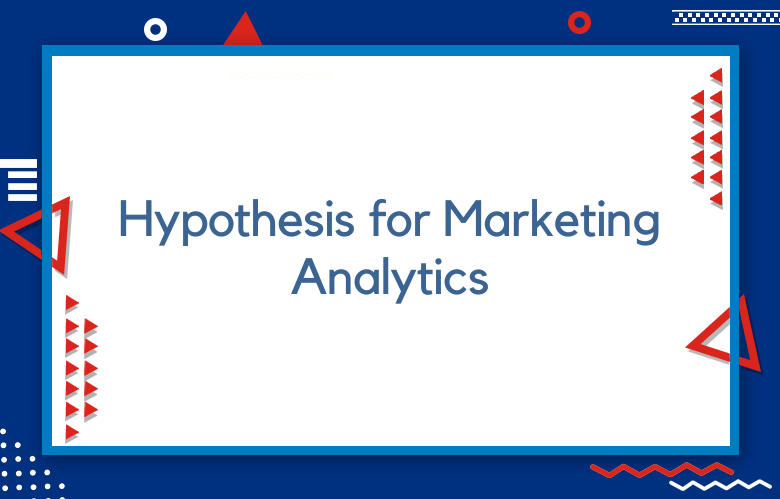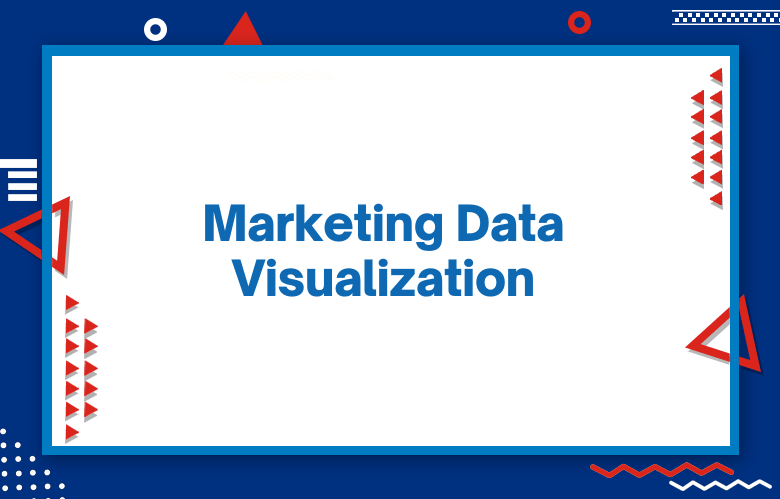How to use a Hypothesis for Marketing Analytics

Hypothesis is a much-underused concept in marketing analytics that can yield significant results. It is a method of testing a marketing theory or proposition before investing substantial resources into implementation. Using this approach can ensure that resources are prioritized to achieve better outcomes. So, let’s dive into the hypothesis and how it can be used in marketing analytics.
What is a Hypothesis?
A hypothesis is a statement derived from a prospective marketing action or change to the existing strategy that might potentially ameliorate a current predicament.
For instance, your website’s CTA button’s lack of action may inflict a high bounce rate, which can draw up a hypothesis. “Adjusting the CTA button’s position and color will reduce the bounce rate.
“This proposition is the hypothesis, and the objective of the analysis is to either back it up with trustworthy data or conclude that it isn’t helpful or practical.
Why Use Hypothesis in Marketing Analytics?
The answer is simple: using a hypothesis can improve analytical accuracy, detect unexpected outcomes, and reduce unnecessary costs.
By conducting a hypothesis before implementing marketing campaigns, companies can save money and time by filtering out unpromising alternatives.
Understanding the Hypothesis for Marketing Analytics
Marketing has become one of the most important aspects of modern-day business operations. With the ever-increasing competition in the market, businesses need to leverage various technological tools and analytical techniques to understand consumer behavior and make informed decisions about their marketing strategies.
One such tool that has gained immense popularity in recent years is marketing analytics. Marketing analytics helps businesses gather, analyze, and interpret large data sets to draw meaningful insights about their target audience.
We will discuss the hypothesis for marketing analytics and how it can help businesses make data-driven decisions.
Understanding the hypothesis is crucial for any marketing analytics project. An idea is based on previous data, research, and assumptions about a problem or opportunity.
In other words, it is an assumption the analyst makes about the relationship between variables.
The hypothesis for marketing analytics should be created based on the analysis objectives and the available data. It can help businesses identify patterns, trends, and relationships between variables that can inform their marketing strategies.
Hypothesis-Driven Analysis Method
This analytical method follows a plan of action that starts with listing the presumptive reasons for the problem. In continuation, we write out the solution or change required, and it ends by stating the critical overviews and measurable factors held up by the assumption.
The next stage is to execute a hypothesis and determine whether a desired outcome is achievable. It can be done by testing the proposition on a subset of the audience, A/B testing, depending on available resources.
Key Hypothesis Components
A well-constructed hypothesis contains two vital components – the problem statement and the proposed solution.
The problem statement in hypothesis detection starts by examining an existing issue’s hypotheses to find a solution, e.g., low conversion rates on the landing page. When proposing a solution, retain prospects that are reachable and measurable.
A hypothesis’s remedy should also include a specific assumption, for example, “Changing the font’s color and size may increase transparency on the landing page and drive up conversion rates.”
How to Use a Hypothesis for Marketing Analytics: A Step-by-Step Guide
Are you tired of making major marketing decisions based solely on gut feelings? Do you wish there was a way to make data-driven decisions with confidence?
Look no further than hypothesis testing! Hypothesis testing is a statistical method that allows you to validate or reject assumptions about your data.
In marketing analytics, this method can help you identify the most effective strategies and make informed decisions about where to invest your resources. Below, we’ll explore the steps for using a hypothesis in your marketing analytics.
Decoding the Hypothesis for Marketing Analytics
As a marketer, you aim to build an effective strategy to reach your audience and increase conversions. But how do you identify the factors that contribute to your success?
Marketing analytics is the solution that helps you create data-backed decisions. However, without a hypothesis, analytics is just a bunch of numbers. It aims to help you understand how to define a marketing hypothesis, its components, and its advantages.
Firstly, let’s define a marketing hypothesis. It is a statement that predicts how a particular marketing strategy, tactic, or change in the marketing mix will affect your desired outcome. The idea usually starts with an ‘if-then’ statement.
For example, “If we increase our social media advertising budget, then we will increase website traffic by 20%.” This statement predicts that increasing social media advertising will cause website traffic to increase.
Identify Your Hypothesis
Before you start your analysis, you need to state what you think will happen. This is your hypothesis. Your hypothesis should be specific and measurable.
For example, if you want to test whether adding a phone number to your website leads to more leads, your hypothesis might be, “Adding a phone number to the website will increase lead generation by 20%.”
Choose a Statistical Test
Once you have your hypothesis, it’s time to choose a statistical test to validate it. The type of test you choose will depend on the kind of data you have and what you’re trying to prove.
For example, you might use a t-test comparing two groups. If you’re comparing multiple groups, you might use an ANOVA.
You might use a Pearson’s r test if you’re looking for a correlation.
Many resources are available online to help you choose the proper test for your hypothesis.
Collect Your Data
Before you can run your statistical test, you need to collect data. Ensure you collect enough data to ensure your results are statistically significant.
You can use tools like Google Analytics, HubSpot, or Salesforce to collect data on website traffic, leads generated, and other vital metrics.
Run Your Test
Now, it’s time to put your hypothesis and data to the test! Run your chosen statistical test and compare the results to your idea. If the results match your vision, congratulations!
You’ve validated your assumption. If the results don’t match your hypothesis, don’t panic. Use the data to refine your idea and try again.
Draw Conclusions and Make Decisions
Once you’ve validated your hypothesis, it’s time to draw conclusions and make decisions. Use your data to determine whether your marketing efforts are working or changes are needed. This data-driven approach will help you make informed decisions and increase your chances of success.
Conclusion:
The marketing world is uncertain, and every marketer must make decisions based on approximations that may or may not bring success.
Using hypotheses in marketing analytics provides a reliable and cheaper way of testing speculation and determining more efficiently what works and what doesn’t. Particularly in handling intense competition and limited resources, marketing teams must maximize their investments.
Hypothesis-driven analysis ensures that marketing choices are driven by data and logic, reducing the probability of making poor judgments. So, start engaging with hypotheses and make informed decisions that benefit users and the business growth rate.
Call: +91 9848321284
Email: [email protected]



